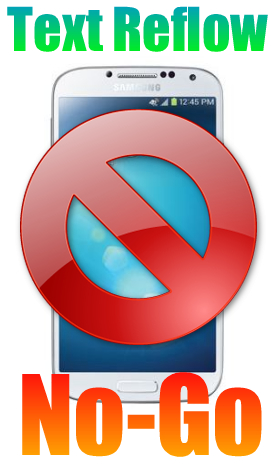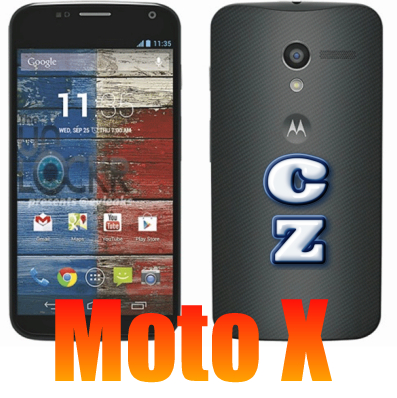2016 Smartphone Consumer Warning! Read BEFORE You Buy Your Next Phone
/MY URGENT ADVICE FOR SMARTPHONE BUYERS IN 2016
If you want the best advice on smartphones, talk to someone who fixes them. And this gadget-fixer has some pretty urgent advice for you today.
In all of my seven years of repairing smartphones and other devices, I can’t think of a time where I had a bigger warning than I do now, and that is…
Do NOT buy a new smartphone without full insurance coverage.
Up until recently, I had been a strong advocate against purchasing extended warranties for electronics. That has changed. Back in the days of old, the outright cost of a smartphone was around $250 to $400. Insurance plans weren’t really necessary, because most of the phones were fairly durable. Plus the cost of replacement was about as much as the insurance.
Fast-forward to today...
In 2016, we have smartphones that are more powerful than consumer-grade laptops, and they are three times as expensive. Brand new smartphones from the major manufacturers today cost anywhere from $650 to $1000, and they are as fragile as they’ve ever been. So when you stuff that new iPhone 7 in your back pocket, it's like jamming an $850 laptop in your jeans.
Another problem, people often don’t realize what the true cost of these devices are. That's because the retail price is subsidized by the five major cellular service carriers. Sprint, AT&T, Verizon, T-Mobile, and US Cellular build in the cost of the smartphone you are getting for “free” by making you commit to using their service for a period of 24 months.
Assuming you fully realize the expense of your new smartphone, let's think about this scenario...
If you walk out the door of your smartphone retailer without insurance and you fall on your face, breaking your phone on the hard, cold concrete, you’d better be ready to be phone-less for a couple of years. Or you'll come to grips with the fact that you’re going to have to shell out several hundred dollars to have it fixed.
Believe me, it happens all the time. And let me tell you a little bit more about the repair side.
When a new smartphone is released to the market, the replacement for a cracked LCD screen assembly is extremely high. And it takes several months for the price to drop. Replacement screens can start out in the $250 to $350 range, and then you can add anywhere from $60 to $100 labor for installing it to your phone.
The Gorilla Glass screen technology is getting better all the time, and the 5th generation being used on most smartphones today is quite durable. But they are still breakable. No phone is indestructible, no matter what the commercials say. And there are dozens of ways you can damage a phone, not just from dropping them.
Now let's talk about brands and models, and what I've noticed...
The Samsung Galaxy S7 Edge phone is the most fragile, and currently the most expensive to repair of all models other than the iPhone 7 (At the time of this blog post, the suppliers have not listed the availability of iPhone 7 replacement screens). All of the curved-edge phones are fragile, and the replacement screens are equally expensive, including the Galaxy Note 7, the Galaxy S6 Edge, and Galaxy S6 Edge Plus phones. If you buy any of these and break it, and have no insurance, you're gonna be heart-broken.
Next on the most-expensive-to-repair list would be the Galaxy S7, Galaxy S6, Galaxy S6 Active, and iPhone 6S Plus smartphones. All of these devices have replacement LCD screens that are in the $150 range, then you can add labor.
The iPhone 6S currently has a replacement screen cost of around $100, plus labor. Older iPhones are much less expensive to repair, and some of the Samsungs still have replacement screens that are expensive and hanging on to higher prices.
The LG smartphones are repairable, and the screen replacement prices are between $50 and $100. But they often malfunction after replacing the screens. The HTC, Motorola, Huawei, Blackberry, Nokia, and other smartphones are not worth even attempting a repair. This is due to the way they are constructed, which can make it next-to-impossible for them to be taken apart and re-assembled.
Some brands are not worth the cost of a paperweight if they are broken, like the ZTE smartphone, and the non-contract entry level Samsung bare-bones smartphone. They are either impossible to fix, or cost more to fix than what they were purchased for in the first place.
My repeated advice to you? Do NOT buy a new smartphone and walk out the door without full insurance coverage. Furthermore, you should also be purchasing a tempered glass screen protector plus a full 3-piece case like an Otterbox (or better yet, a Gadget Gurus “Guardian Gear” case) for maximum protection.
If you are getting a new smartphone and you can’t afford to buy it straight out at the full retail price, but you’re getting it on installments over a 2-year period, you better be buying insurance. And when you do, be clear on what your deductible will be, and make sure you can afford it. Expect to shell out $200 for a claim.
If you can’t afford a $200 deductible or the cost of full replacement, I advise against buying the latest-greatest iPhone or Samsung smartphone. Get something you can afford, something that won’t break the bank after you break the screen. Most people don’t need more than a $99 basic smartphone that you can throw in the trash and replace if you break it.
It breaks my heart when people come to me with a broken smartphone that is only a month old, and I have to break the news to them that it will cost hundreds of dollars to fix. When you can’t afford the repair, it means continuing monthly payments with an unusable phone. The only alternative is buying an older phone to use with your service contract.\
Take heed, and spread the word. Save yourself or someone you know from serious heartache. Or a flat wallet.
Carlton Flowers
Gadget Guru, King of Smartphones




